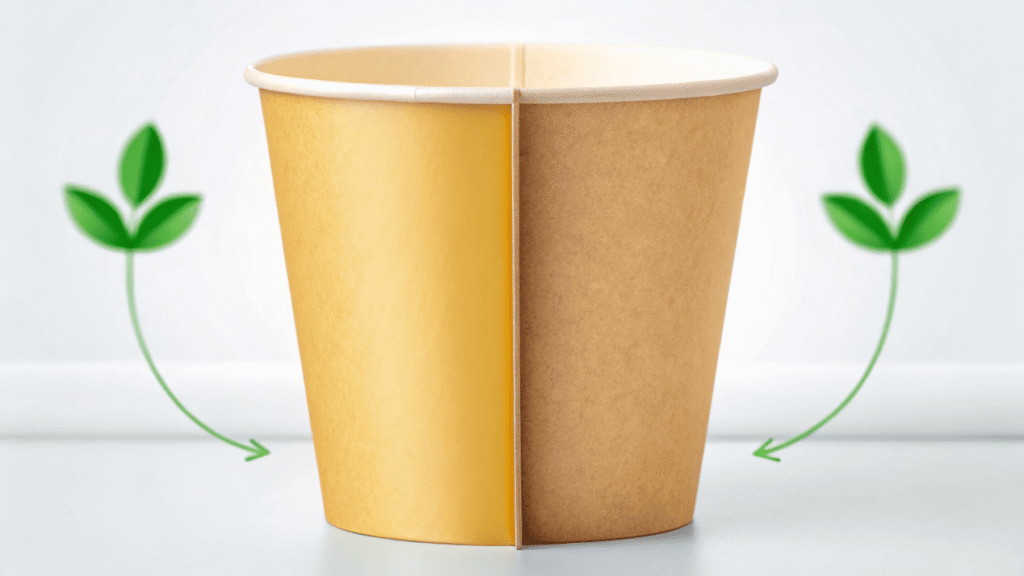You assume a paper cup is just made of simple paper. This makes you wonder why some cups feel sturdy and safe, while others get flimsy and leak immediately.
Paper cups are made from a high-grade, specialized paperboard called "Cupstock." It is made from 100% food-grade virgin wood pulp and laminated with a waterproof coating to hold liquids safely.
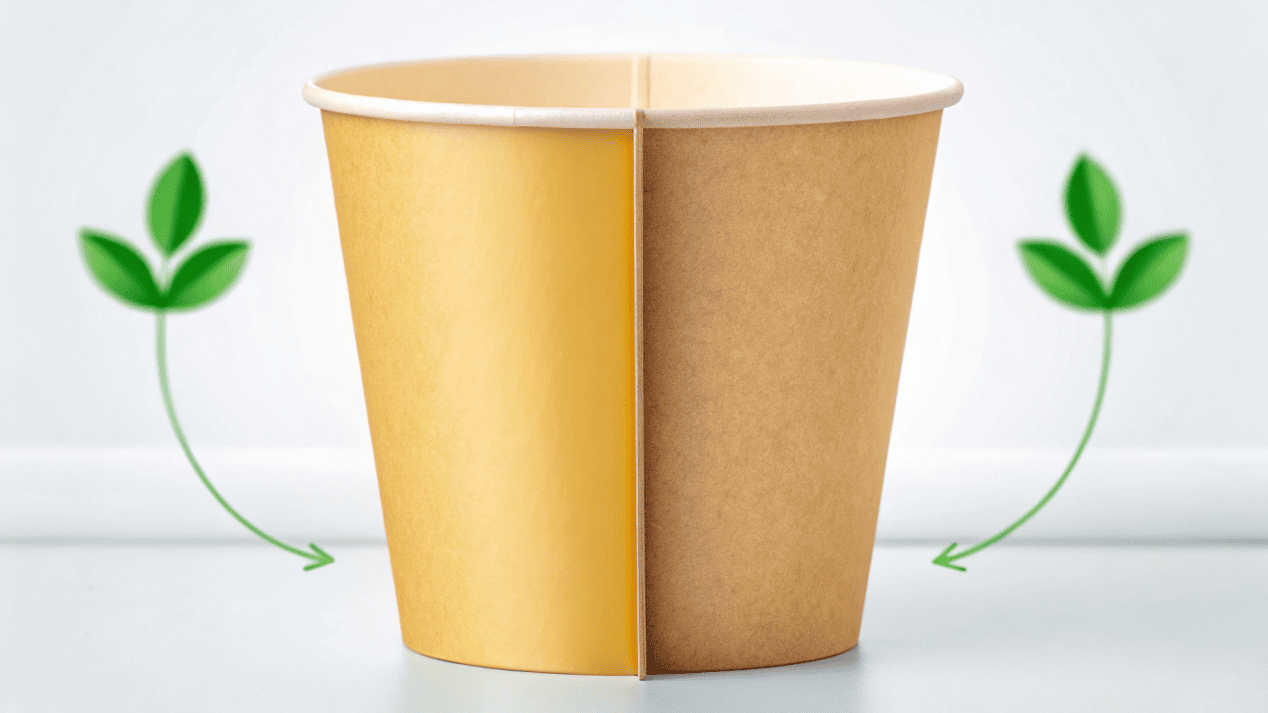
At a glance, a paper cup looks simple. But in my 21 years of making them, I've learned it's a small marvel of material science. The choices we make about the paper and coating are non-negotiable for producing a safe, high-quality product. Understanding the anatomy of your cup is the first step to appreciating the engineering that goes into it. Let's deconstruct the blueprint together.
Why Can't You Just Use Any Paper for a Cup?
When you hear "paper cup," you might think any paper will do. To be eco-friendly, you may even consider using recycled paper, but this can lead to disastrous results.
You must use a special paperboard called "Cupstock." It's made from 100% food-grade virgin pulp. Recycled paper is unsafe due to potential contaminants and weak fibers that create a flimsy, unreliable cup.
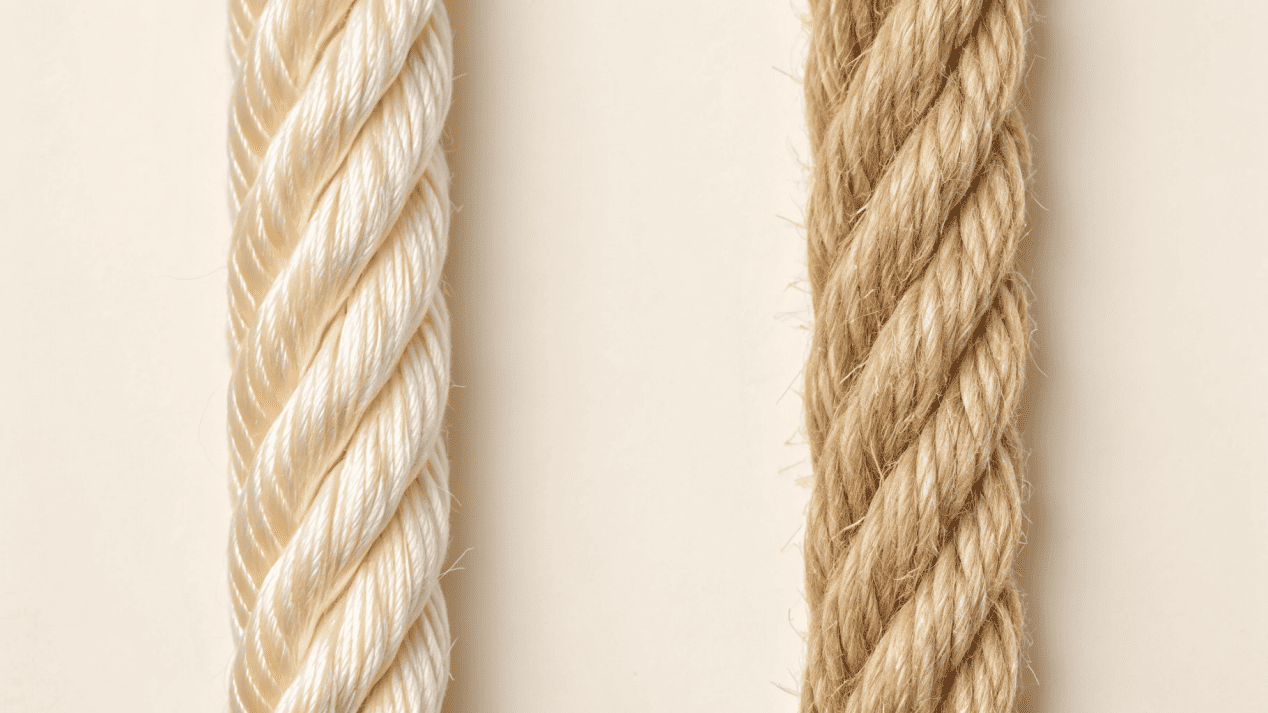
The core of the cup is not just paper; it's a specific material we in the industry call "Cupstock" or "Cup Board." This is the first and most important choice we make, and for me, there is no room for compromise here.
The Strength of Virgin Pulp
"Virgin" means the paper pulp comes directly from trees, almost always from responsibly and sustainably managed forests. It has never been used for anything else. This is the only way to guarantee it is 100% pure and free from any contaminants like old inks, glues, or chemicals. Critically, the fibers in virgin pulp are long and strong. This gives the paperboard a high stiffness, which is essential for the cup to hold its shape and feel sturdy in your customer's hand.
The Problem with Recycled Paper
While recycling is great for things like shipping boxes, it is unsafe and unsuitable for paper cups. The recycling process cannot guarantee the complete removal of all the tiny contaminants from the paper's previous life. More than that, the recycling process chops up and shortens the paper fibers. Trying to make a strong cup from these short fibers is like trying to build a strong rope from tiny, broken threads. The final product would be weak, get soggy fast, and could even collapse. That's a risk I will never take with a client's brand.
How Does a Paper Cup Hold Liquid Without Getting Soggy?
You know that regular paper turns to mush when it gets wet. So, you're puzzled how a paper cup can hold hot coffee for an hour without falling apart.
A micro-thin, waterproof coating is laminated onto the paperboard to create a leak-proof barrier. The industry standard is PE (Polyethylene), but modern recyclable water-based coatings are the future.
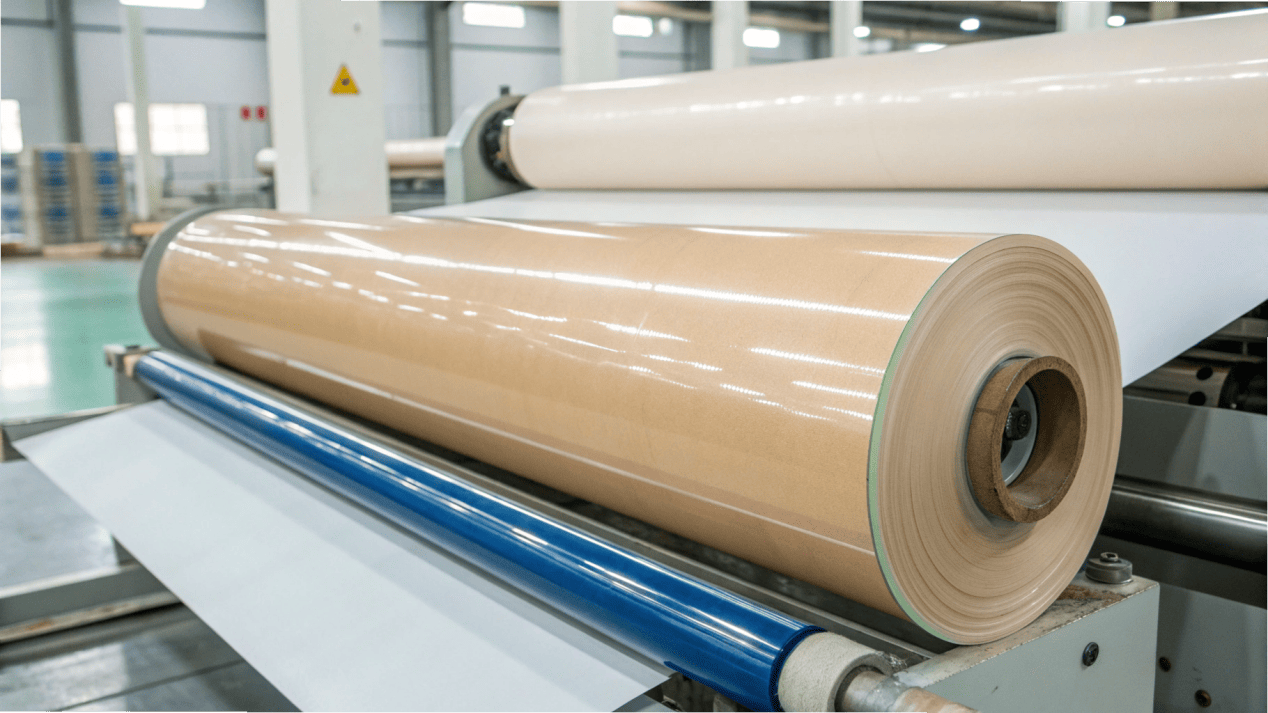
Untreated paper acts like a sponge. The secret to making it hold liquid is the ultra-thin waterproof barrier that is bonded to the inner surface of the cupstock. This coating is what truly makes the cup functional.
| Coating Type | Source | Key Feature | My Experience |
|---|---|---|---|
| PE (Polyethylene) | Petroleum-based | Industry standard, highly reliable | This is the workhorse of the cup industry. It's cost-effective and extremely effective for both hot and cold liquids. The vast majority of cups in the world use PE. |
| PLA (Polylactic Acid) | Plant-based (Corn) | Compostable | PLA is an interesting eco-alternative, but I am always honest with clients about its major weakness: it does not handle heat well and can warp with hot coffee. |
| Water-Based | Waterborne Polymers | Designed for recyclability | This is the future. I am championing this technology because it allows the cup to be easily recycled in standard paper mills. It performs excellently and is the best choice for a true circular economy. |
Choosing the right coating depends on your brand's goals. PE is the proven standard for performance. A water-based coating is the premium choice for brands that want to lead with a powerful sustainability story.
How Do You Know a Paper Cup Won't Actually Leak?
You plan to order thousands of cups for your business. You worry that a bad batch could leak, creating messes for your customers and damaging your hard-earned reputation.
We don't just trust the materials; we test them constantly. Finished cups go through 24-hour leakage tests, seam strength tests, and rim rigidity tests to guarantee they are 100% durable.
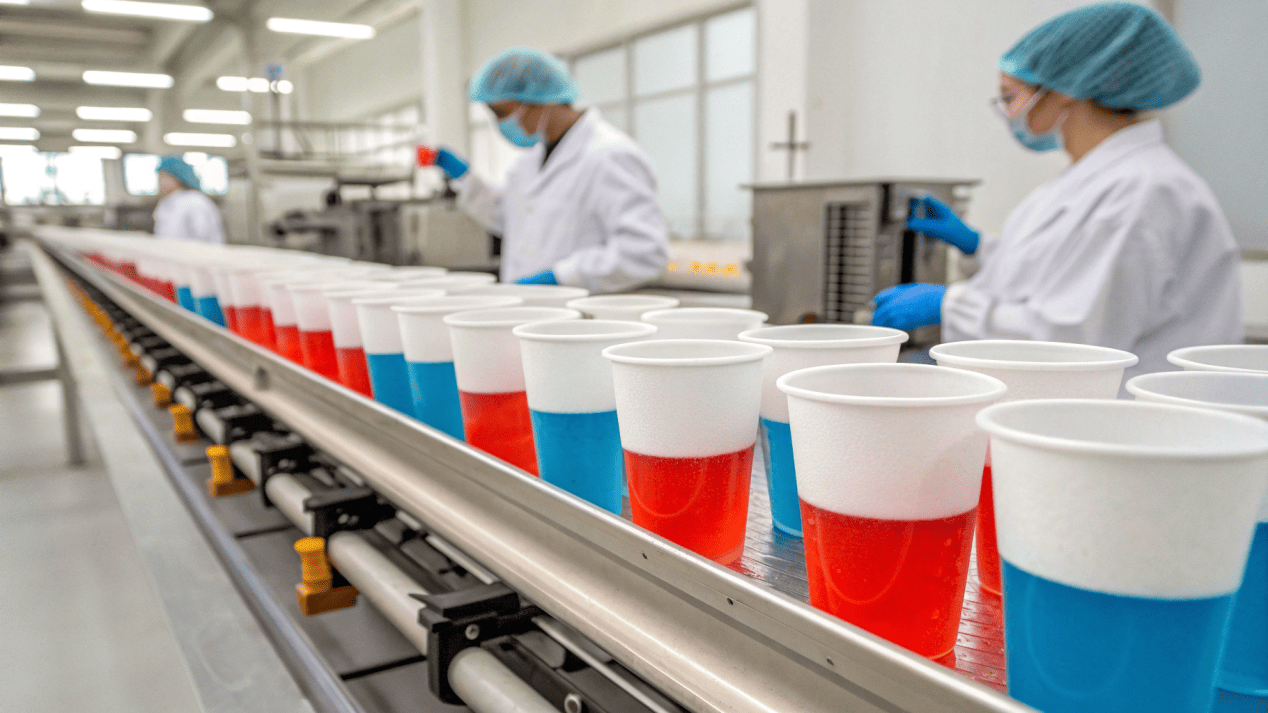
A beautiful cup that leaks is a total failure. I learned early in my career that you cannot just assemble the parts and hope for the best. That's why we have a strict quality control process in my factory where we rigorously test both the raw materials and the finished cups.
Our In-House Testing Process
- Leakage Test: We take random cups from the production line, fill them with very hot (95°C) or ice-cold (0°C) water, and let them stand for 24 hours. We then meticulously inspect for any sign of a leak at the side seam or bottom seal, or any sogginess in the cup wall.
- Seam Strength Test: The side seam of the cup is heat-sealed together. We physically try to pull this seam apart. A good seal means the paper itself will tear before the seam gives way. This ensures the cup can handle the pressure of being held.
- Rim Rigidity Test: The top rim of the cup must be perfectly rolled and firm to ensure a lid fits securely. We test its resistance to being squeezed or deformed, so you know your lids will snap on tight every time.
This constant testing is my personal guarantee to my clients that every cup they receive will perform flawlessly.
Where Does the Paper for Paper Cups Come From?
You might think a cup factory like mine also chops down trees and makes paper. This hides where the real quality begins and who is responsible for the core material's integrity.
We are "converters," not paper-makers. We source certified, high-grade cupstock from world-class paper mills like Stora Enso, International Paper, and APP. This guarantees quality from the start.

It’s important to be transparent about the supply chain. My factory's role is what we call a "converter." Think of us as expert tailors. We don't weave the fabric (the paper), but our expertise lies in selecting the absolute best fabric for the suit you want. Then, we use our skill and machinery to turn that fabric into your perfectly finished custom cup.
Partnering with Global Leaders
We source our cupstock directly from the giants of the paper industry. These are massive, globally recognized corporations like Stora Enso in Europe, International Paper in the USA, and APP in Asia. We partner with them for a simple reason: they have the scale and quality control to produce the best, most consistent cupstock in the world. Every roll of paper that enters our factory is already certified for the highest standards of safety (FDA, BRC) and responsible forestry (FSC). This strategy ensures that the foundation of your cup is built on a legacy of global quality before we even begin our work.
Conclusion
A paper cup is an engineered product made from certified virgin "Cupstock" and a technical waterproof coating. We source from the world's best mills to guarantee superior quality.
